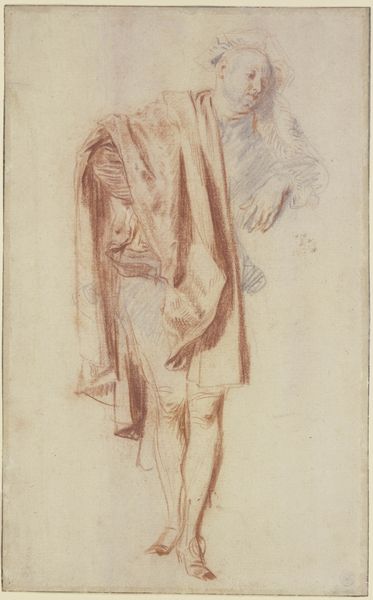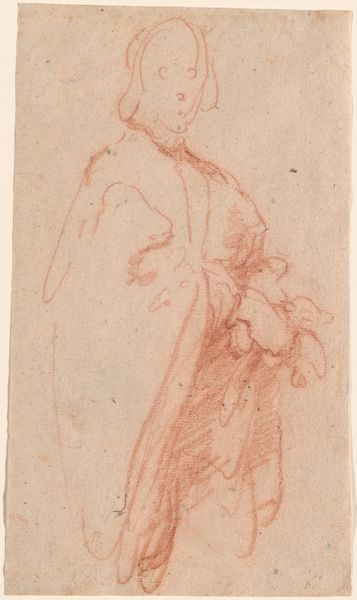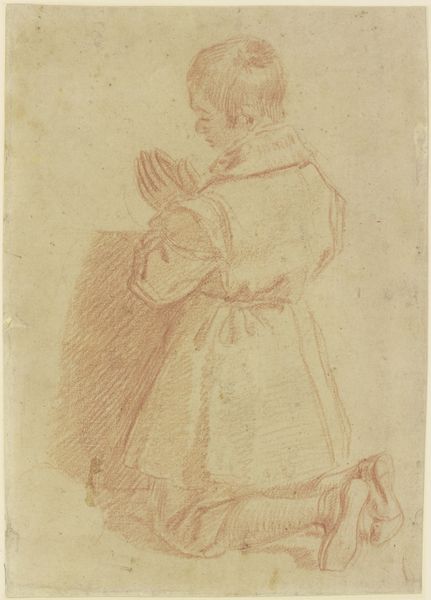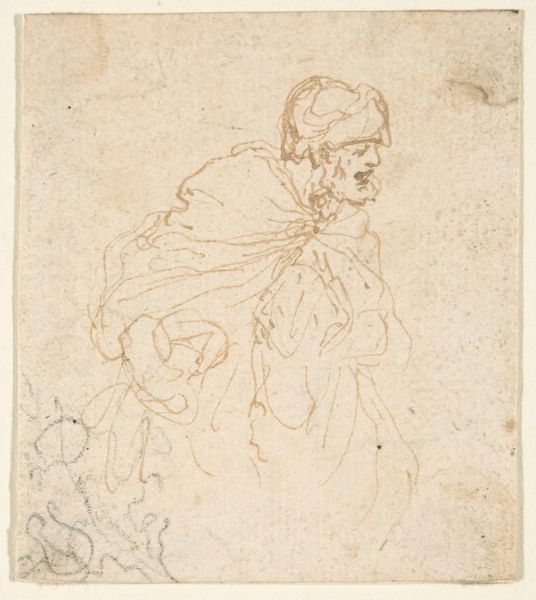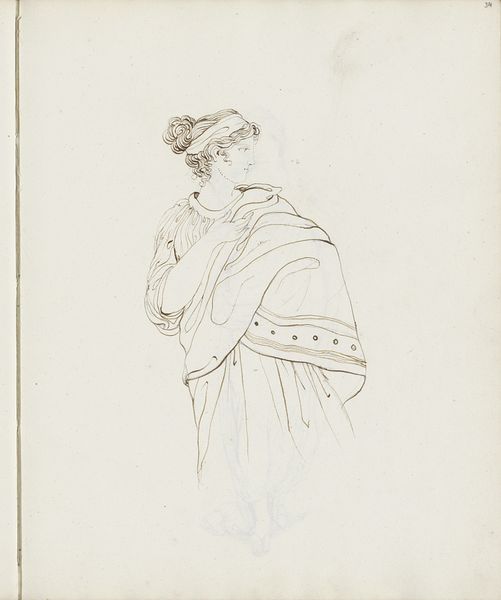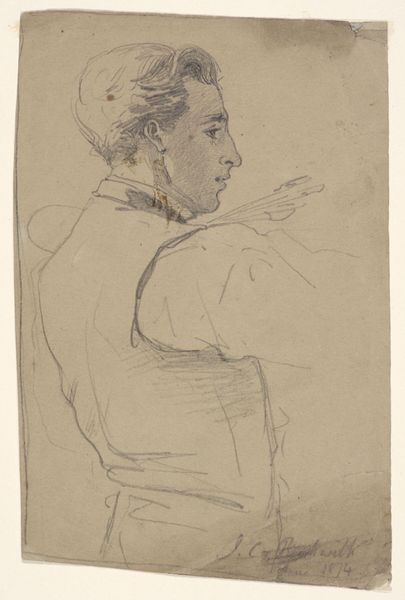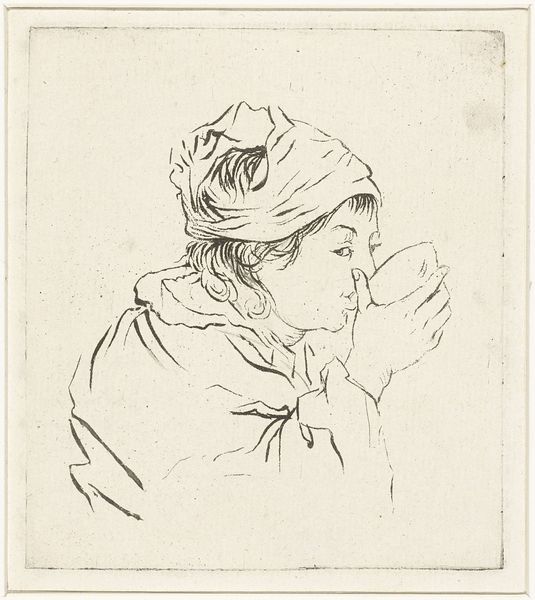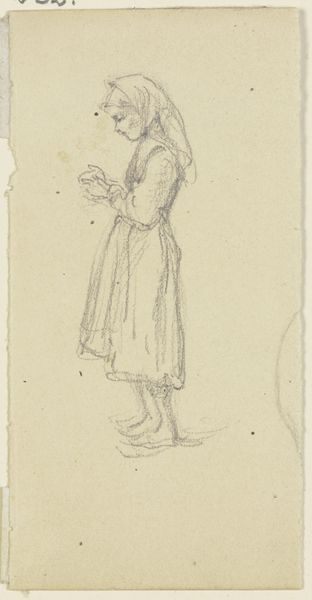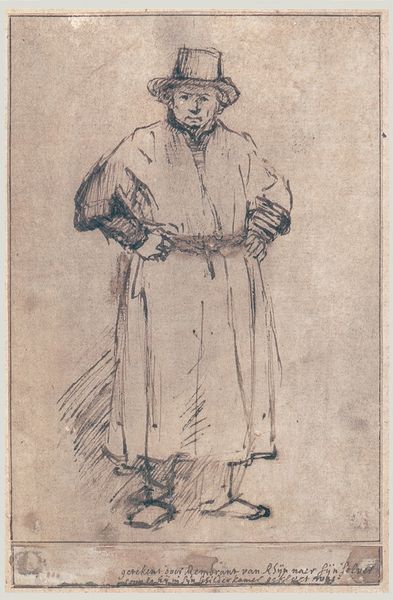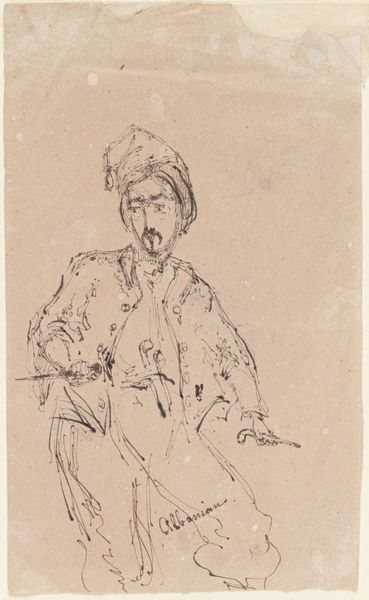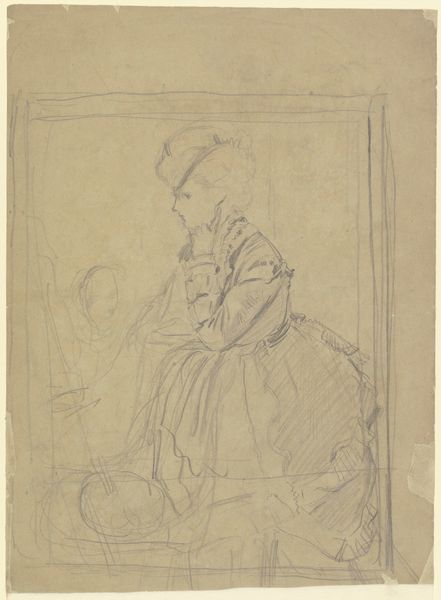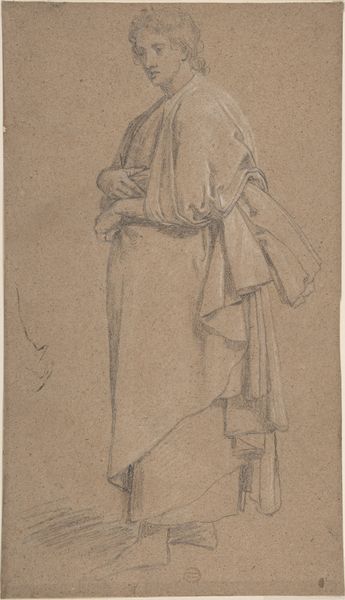
drawing, red-chalk, paper, chalk, pastel
#
portrait
#
drawing
#
red-chalk
#
paper
#
chalk
#
pastel
#
rococo
Copyright: Public Domain
Editor: This is "Studie einer sich umwendenden Frau," or "Study of a Woman Turning Around," by Nicolas Lancret, from before 1730. It’s a chalk drawing on paper, and it feels very immediate and intimate, like a fleeting moment captured. What strikes you most about this piece? Curator: I'm particularly drawn to the way Lancret utilizes red chalk and pastel. The materiality itself speaks volumes about the Rococo period's fascination with texture and surface. Note how the chalk almost blends into the paper. It denies a separation of art and ground, and in a way, makes them the same material. Editor: It’s interesting you focus on the materials. How does that connect with its historical context? Curator: Think about the social context in which Lancret was working. Pastel and chalk, while seemingly delicate, were readily accessible materials. This accessibility contrasts with the aristocratic subjects he often depicted. The very act of using such materials to portray these subjects raises questions about labor and consumption during the period. It makes one wonder about the value systems operating, about who had the access and leisure to produce and enjoy these sorts of sketches. Do you see anything similar in the rapid execution? Editor: Yes, the sketchiness seems to almost democratize the portrait, even if it’s of an aristocratic woman. Curator: Exactly! It brings her down to Earth, humanizes her, and allows the viewer to focus less on the ostentation of wealth and more on the artistic process itself, the labor of creating an image. What do you make of the clothing indicated in this artwork? Editor: I hadn’t really considered that. Now that you point it out, it feels like there's a tension between the implied luxury and the rough, suggestive lines. It seems to be hinting at something… Curator: Precisely. The means of production, the very making of this artwork, challenges traditional boundaries between high art and the everyday. Editor: This has totally shifted my perspective! I was initially focused on the aesthetic quality, but I see now how much the materials and process reveal about the social fabric of the time. Thanks for this in-depth materialist approach!
Comments
stadelmuseum about 2 years ago
⋮
The painter Nicolas Lancret admired Antoine Watteau and imitated both his style and his motifs. Here, for example, he used the trois-crayons technique so typical of Watteau to depict a lady immersed in thought. Her lids lowered, she gazes pensively over her shoulder, her right hand raised to her chin. The sheet was considered a work by Watteau until it was found to correspond to a painting by Lancret.
Join the conversation
Join millions of artists and users on Artera today and experience the ultimate creative platform.
